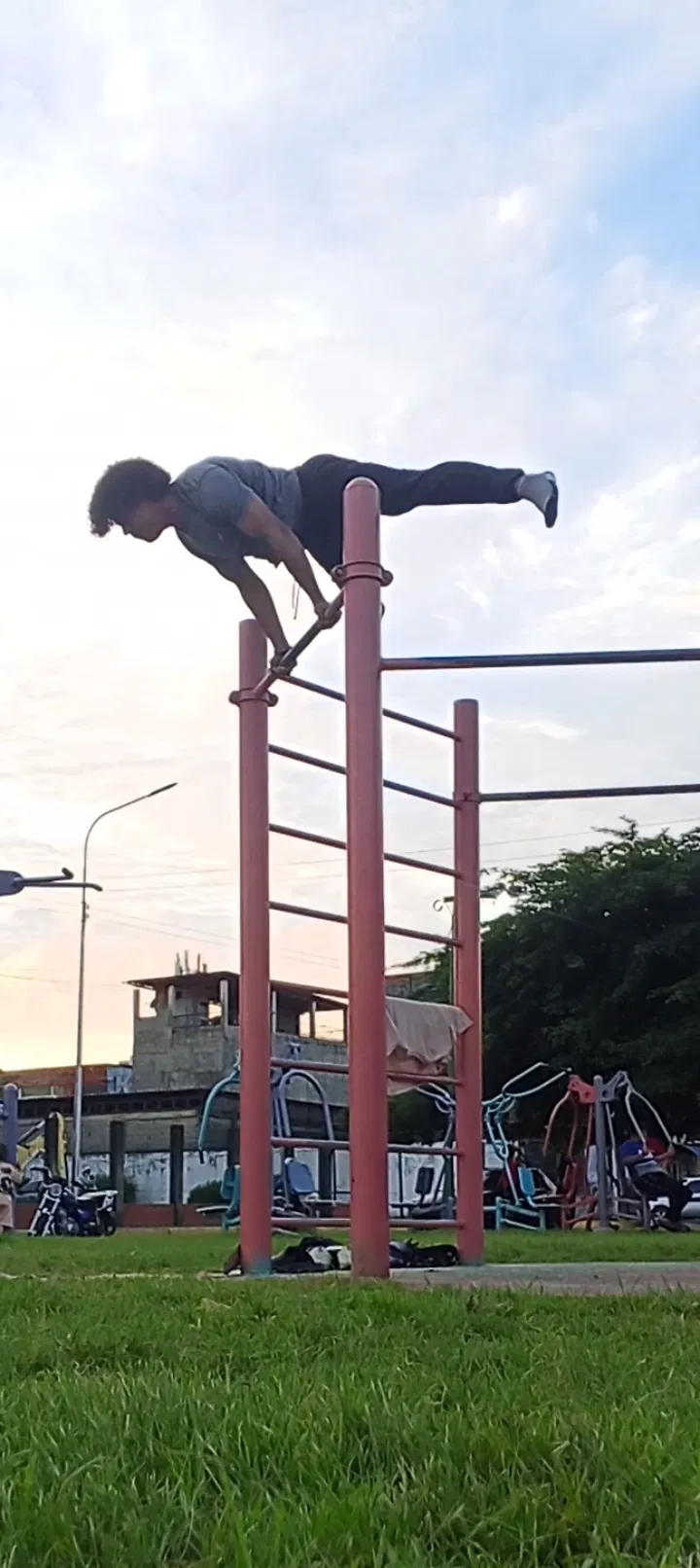
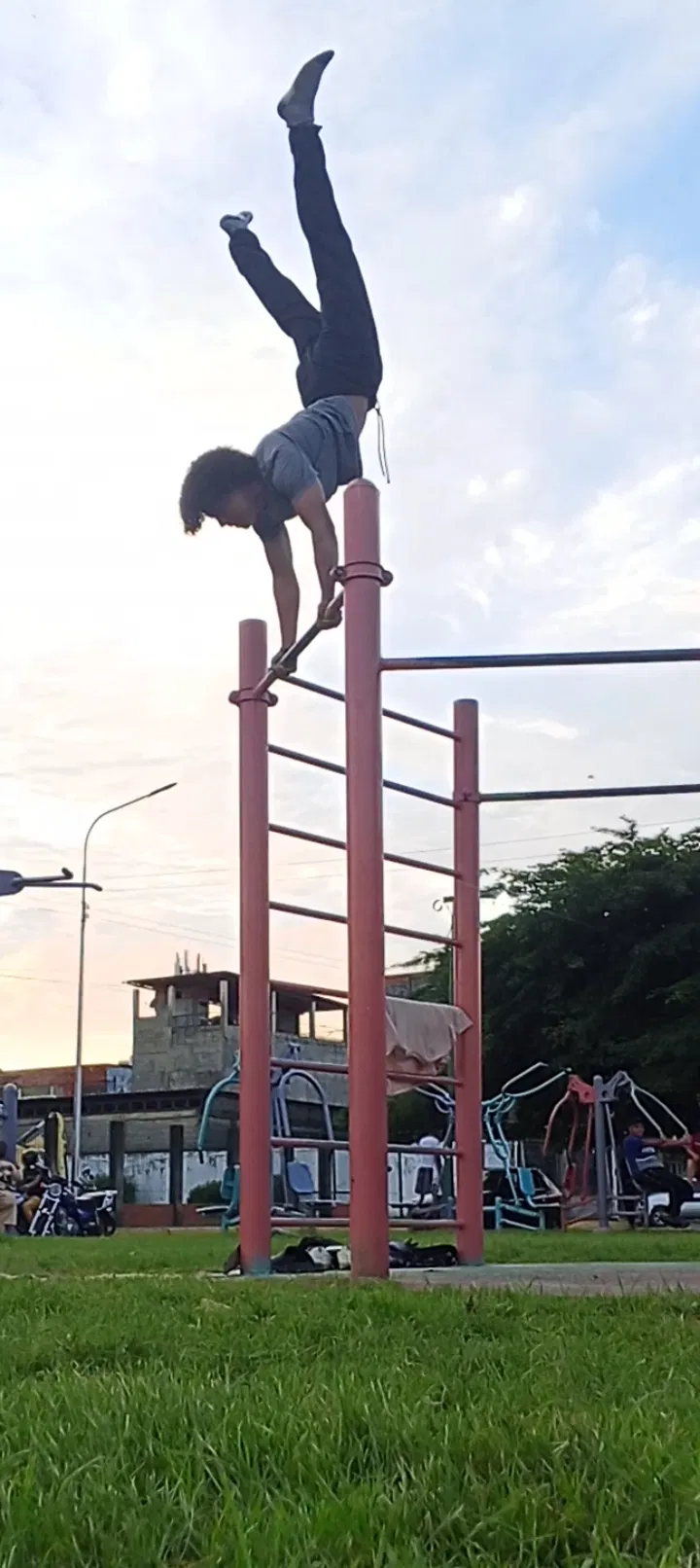
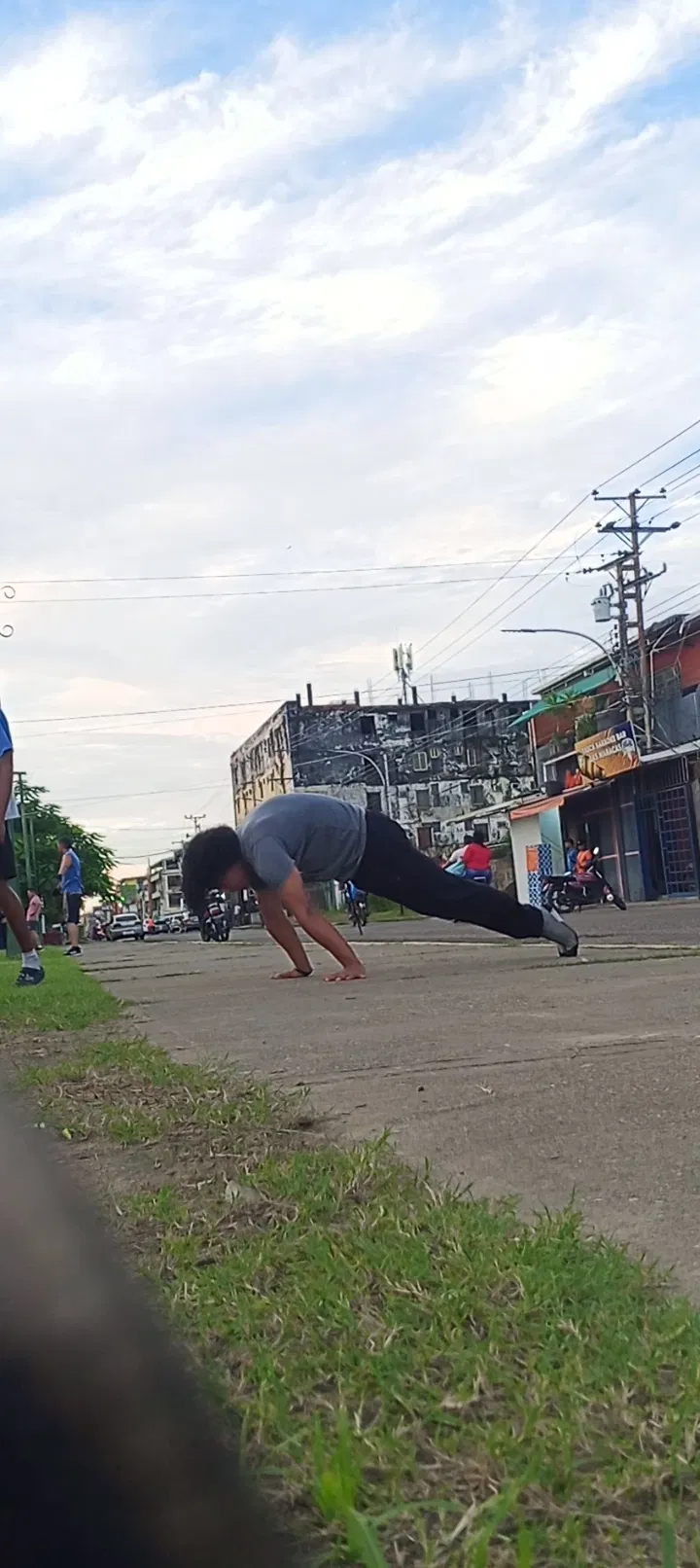
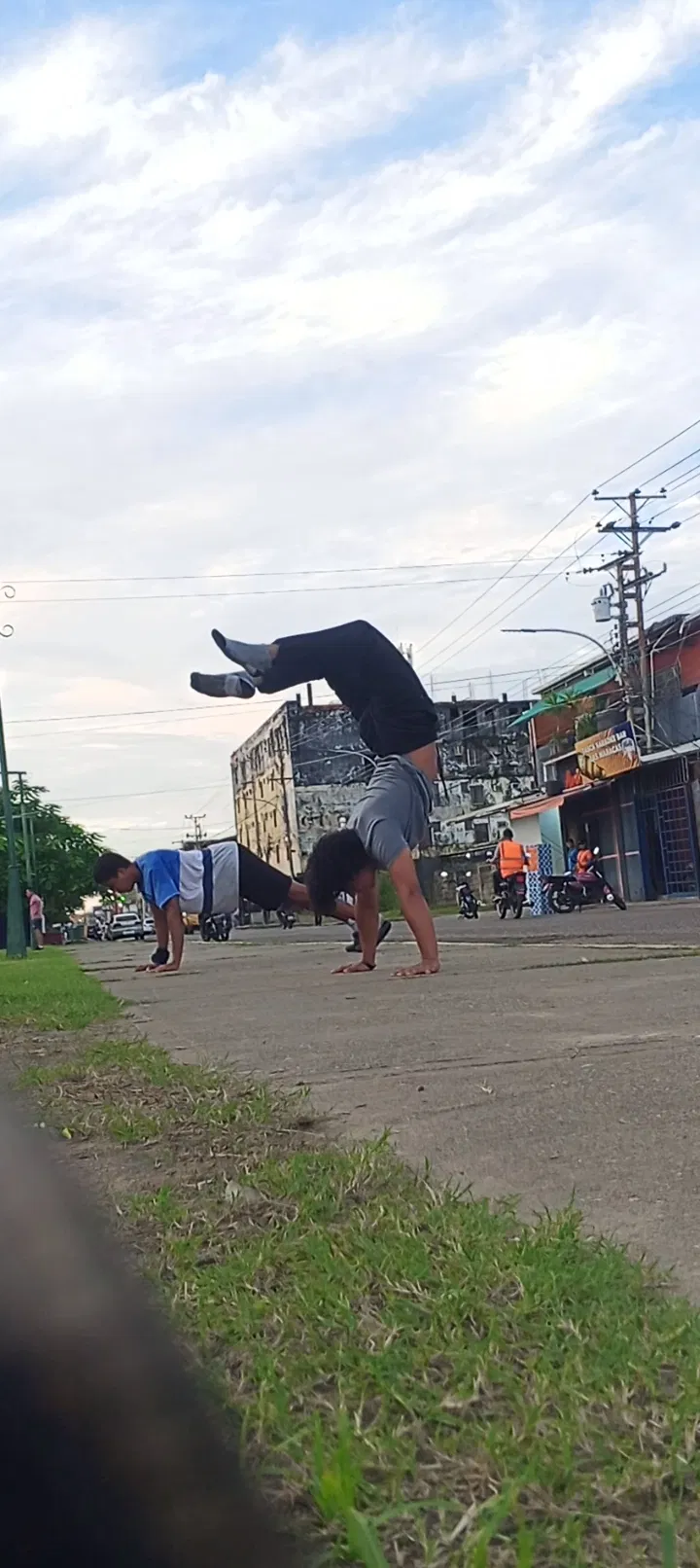
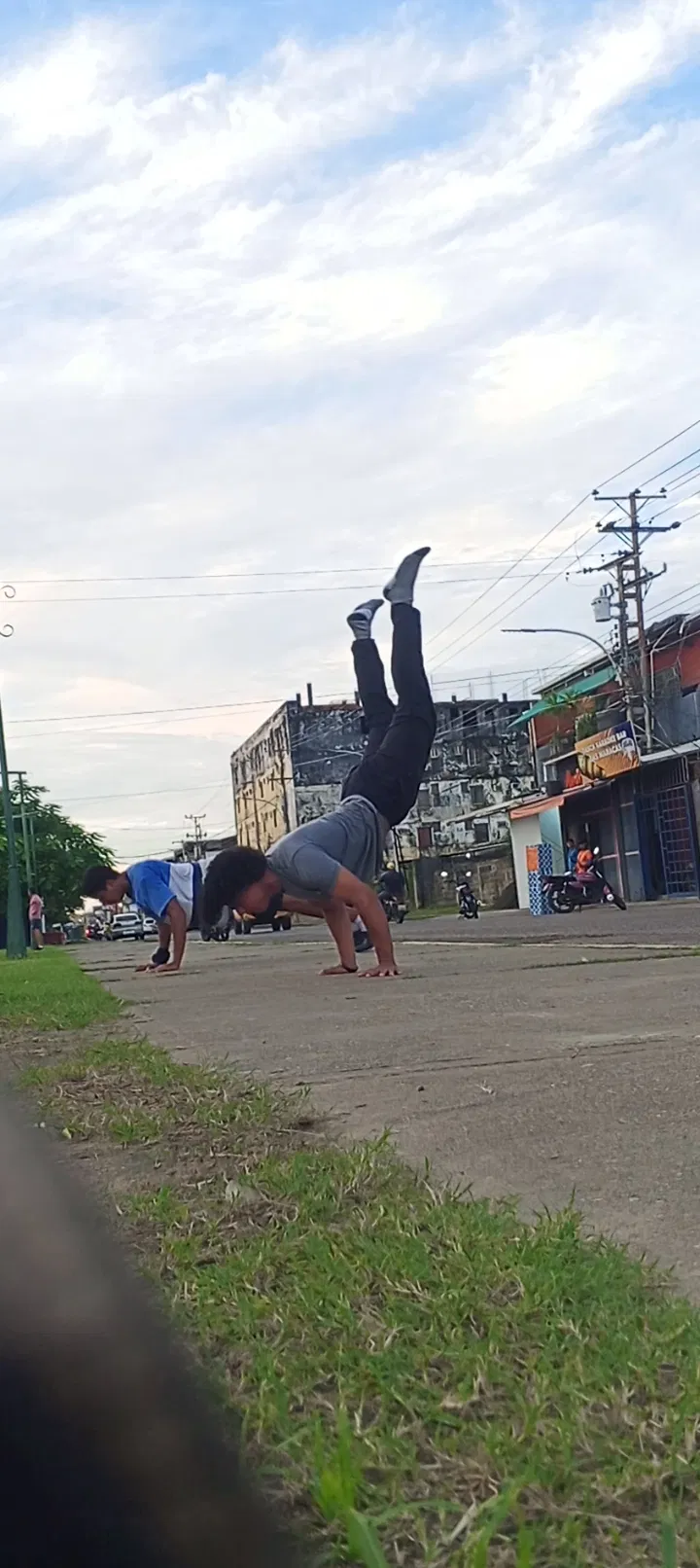
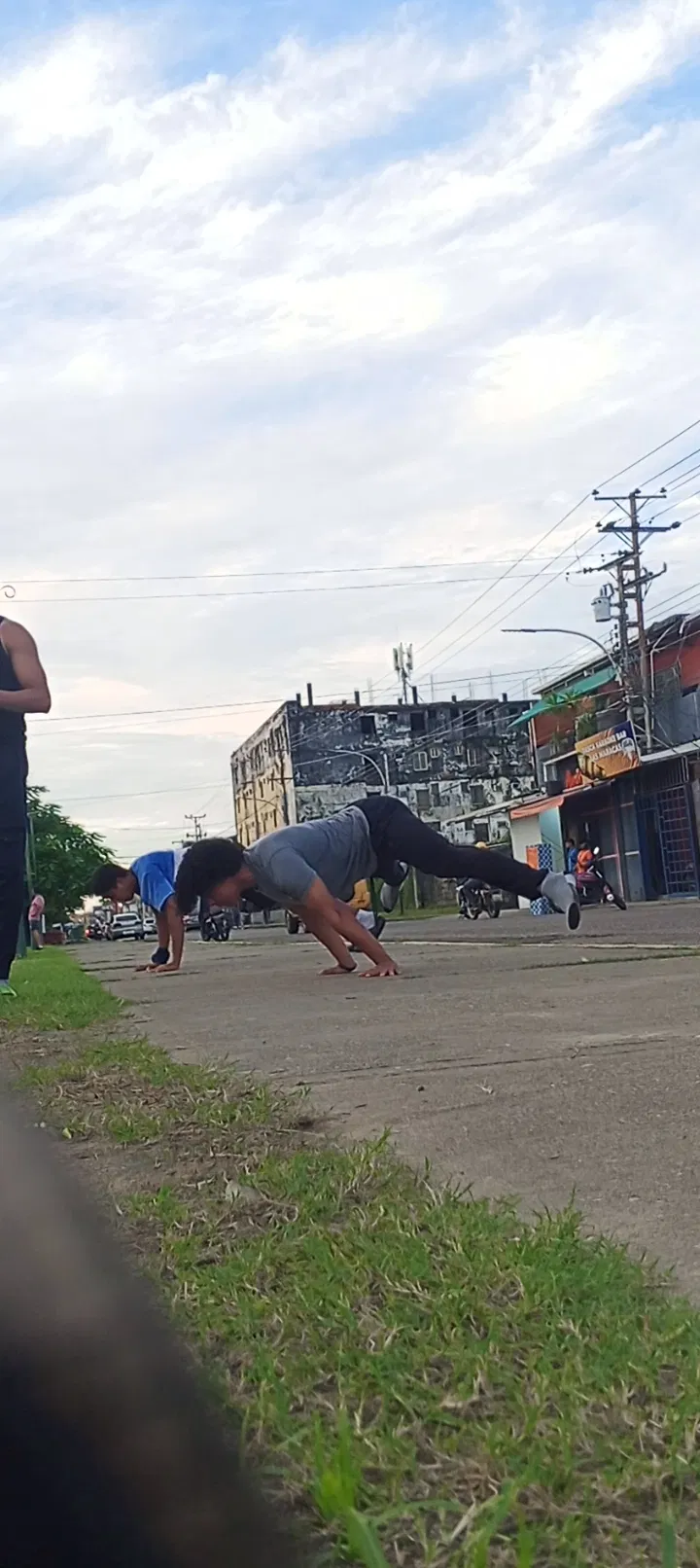
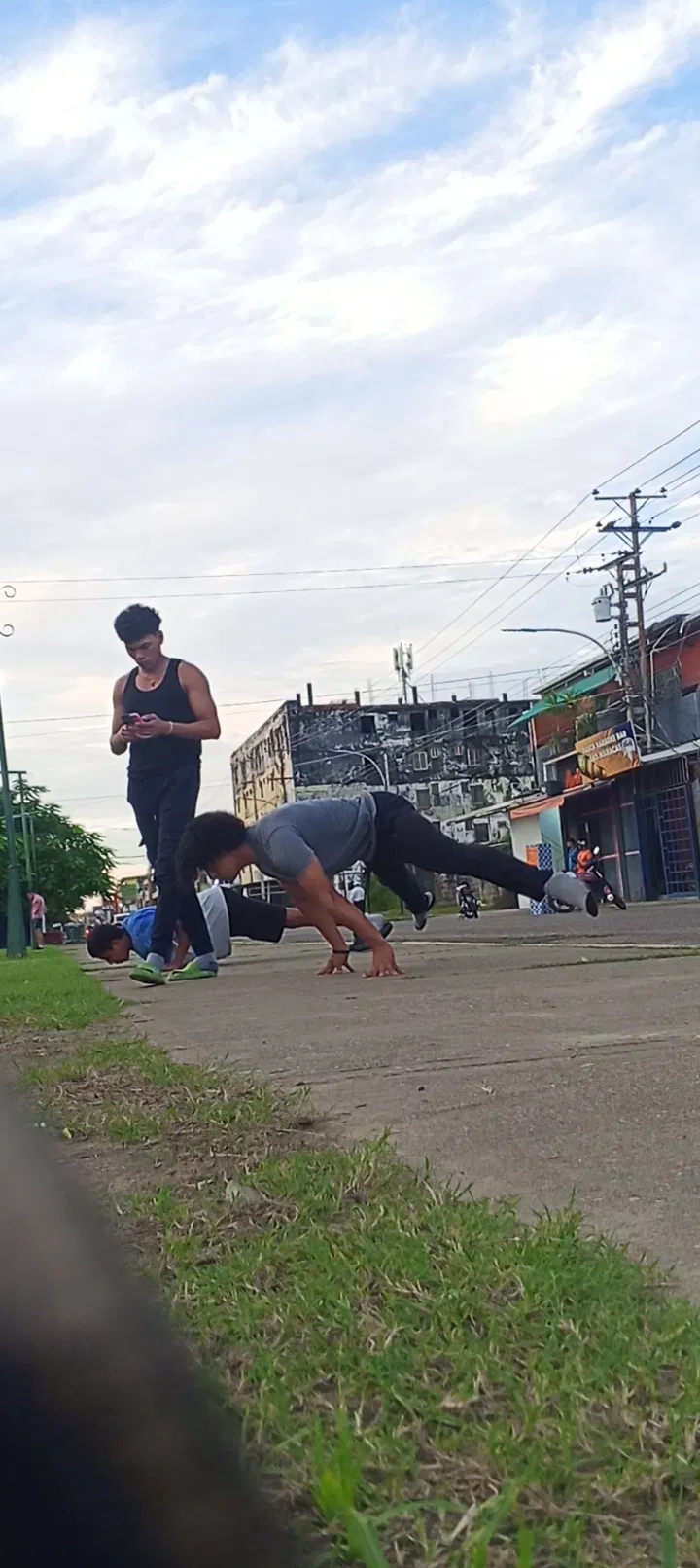
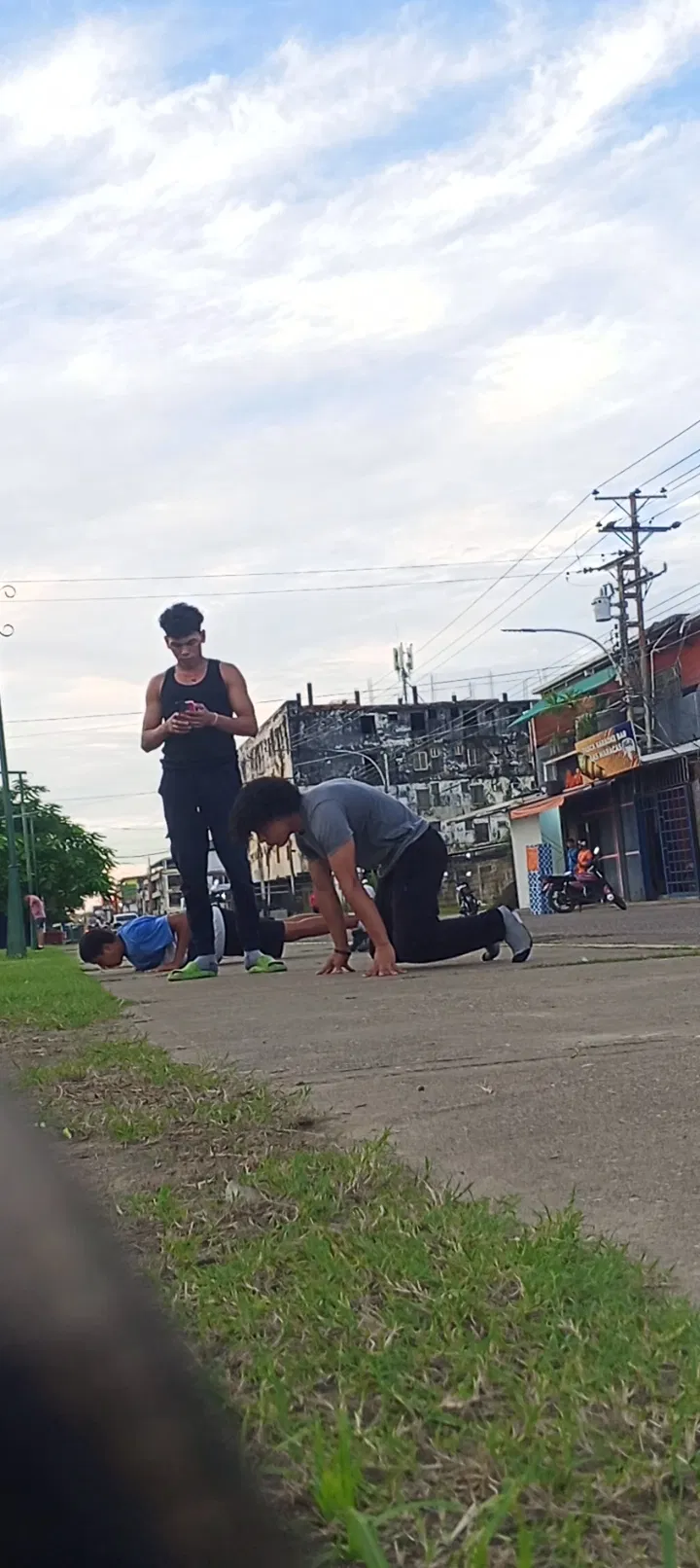
|
Spanish
|
English
| |-|-|
Hola que tal, usuarios de Hive, Liketu y Esency. ¿Cómo están en este hermoso día? Espero que de maravilla.
Hoy decidí comenzar mi rutina de calistenia con una sesión dedicada al fortalecimiento para los ejercicios de press en plancha. Este es un tema fundamental para quienes aspiramos a controlar movimientos de fuerza más avanzados, y a menudo es un escalón que requiere mucha paciencia y trabajo inteligente. El objetivo no es solo empujar, sino crear una base sólida de fuerza en los hombros, tríceps y core que nos proteja y nos permita progresar con seguridad.
Muchos creen que para lograr una plancha o un press de plancha solo se necesita practicar el movimiento final una y otra vez. Sin embargo, ese enfoque suele llevar a estancamientos y, en ocasiones, a molestias o lesiones. La clave está en descomponer el movimiento en partes manejables y fortalecer los patrones musculares involucrados de manera aislada y combinada. Se trata de construir los cimientos antes de levantar el muro.
Dos progresiones excelentes y esenciales para este fin son el press en straddle y el press en tuck. Estas variantes nos enseñan a manejar el centro de gravedad y a desarrollar la fuerza de empuje necesaria para elevar la cadera por encima de los hombros.
El press en tuck es probablemente el mejor punto de partida. Consiste en comenzar en una posición de plancha con las rodillas flexionadas y pegadas al pecho, en lo que se conoce como "tuck". Desde ahí, el movimiento implica llevar el peso del cuerpo hacia adelante, redondeando ligeramente la espalda alta (protrayendo las escápulas) para crear el impulso necesario y empujar con fuerza con los brazos hasta llegar a la posición de plancha baja. La posición compacta de las piernas acerca el peso al punto de apoyo (las manos), haciendo que el levantamiento sea más manageable. Este ejercicio es invaluable para familiarizarse con la sensación de transferir el peso y empujar con los hombros en un rango de movimiento tan exigente.
Una vez que el press en tuck se siente controlado, se puede dar el salto al press en straddle. En esta variante, las piernas están abiertas y extendidas hacia los lados. Esta posición cambia la distribución del peso y, aunque sigue siendo una progresión asistida, requiere considerablemente más fuerza en el core y en los hombros para controlar las piernas durante el empuje. La apertura de las piernas reduce el brazo de palanca, facilitando el movimiento comparedo con la plancha completa, pero exige una gran activación de la espalda y el abdomen para mantener la estabilidad. Dominar el press en straddle significa que estás desarrollando no solo fuerza de empuje, sino también un control corporal integral.
Más allá de practicar estas progresiones, es crucial incorporar ejercicios de fortalecimiento auxiliar. Incluir push ups con elevación de pies para ganar fuerza de empuje en declive, pike push ups para fortalecer específicamente el hombro en ese ángulo, y mantener posiciones estáticas como la plancha con pies elevados o el pike hold, construye la resistencia necesaria. La consistencia en este tipo de trabajo complementario es lo que finalmente crea la sinergia muscular para ejecutar el movimiento con elegancia y control.
Recuerden, el camino en la calistenia es una maratón, no una carrera. Celebrar los pequeños progresos, como lograr una repetición más limpia o notar una mayor estabilidad, es tan importante como el objetivo final. Escuchen a su cuerpo, sean constantes y disfruten del proceso de construcción de una fuerza real y funcional.
Hey there, users of Hive, Liketu, and Esency. How are you on this beautiful day? I hope you're doing great.
Today I decided to start my calisthenics routine with a session dedicated to strengthening for planche press exercises. This is a fundamental topic for those of us who aspire to control more advanced strength movements, and it is often a step that requires a lot of patience and smart work. The goal is not just to push, but to build a solid foundation of strength in the shoulders, triceps, and core that protects us and allows us to progress safely.
Many people believe that achieving a planche or a planche press only requires practicing the final movement over and over again. However, that approach often leads to plateaus and, sometimes, to discomfort or injuries. The key is to break down the movement into manageable parts and strengthen the involved muscle patterns in an isolated and combined manner. It's about building the foundation before raising the wall.
Two excellent and essential progressions for this purpose are the straddle planche press and the tuck planche press. These variations teach us to manage our center of gravity and develop the necessary pushing strength to elevate the hips above the shoulders.
The tuck planche press is probably the best starting point. It involves starting in a planche position with the knees bent and tucked into the chest, in what is known as a "tuck." From there, the movement involves shifting the body's weight forward, slightly rounding the upper back (protracting the scapulae) to create the necessary momentum and pushing hard with the arms to reach the low planche position. The compact leg position brings the weight closer to the point of support (the hands), making the lift more manageable. This exercise is invaluable for familiarizing yourself with the sensation of transferring weight and pushing with the shoulders in such a demanding range of motion.
Once the tuck planche press feels controlled, you can move on to the straddle planche press. In this variation, the legs are open and extended out to the sides. This position changes the weight distribution and, although it is still an assisted progression, it requires considerably more core and shoulder strength to control the legs during the push. The leg spread reduces the lever arm, making the movement easier compared to the full planche, but it demands significant back and abdominal activation to maintain stability. Mastering the straddle planche press means you are developing not only pushing strength but also comprehensive body control.
Beyond practicing these progressions, it is crucial to incorporate auxiliary strengthening exercises. Including decline push-ups to build pushing strength in a declined angle, pike push-ups to specifically strengthen the shoulder in that position, and holding static positions like an elevated feet planche or a pike hold, builds the necessary endurance. Consistency in this type of complementary work is what finally creates the muscular synergy to execute the movement with elegance and control.
Remember, the path in calisthenics is a marathon, not a sprint. Celebrating small progressions, like achieving a cleaner repetition or noticing greater stability, is as important as the final goal. Listen to your body, be consistent, and enjoy the process of building real, functional strength.
-------
|
@steven-sw - Creando Contenido de Calidad
|
|-|
|
@steven-sw - Creating Quality Content
|
-----
|
Créditos
|
Credits
|
|-|-|
|
Cámara
|
Camera
|
|
@steven-sw
|
@steven-sw
|
|
Herramientas de edición y Producción
|
Editing and Production Tools
|
|-|-|
|
|
Día: Lunes
|
Day: Monday
|
|
Fecha de Publicación:
06/08/2025
|
Publication Date: 08/06/2025
|
---
---
For the best experience view this post on [Liketu](https://liketu.com/@steven-sw/fortalecimiento-de-press-en-plancha-y-pino-en-barra-esp-en)